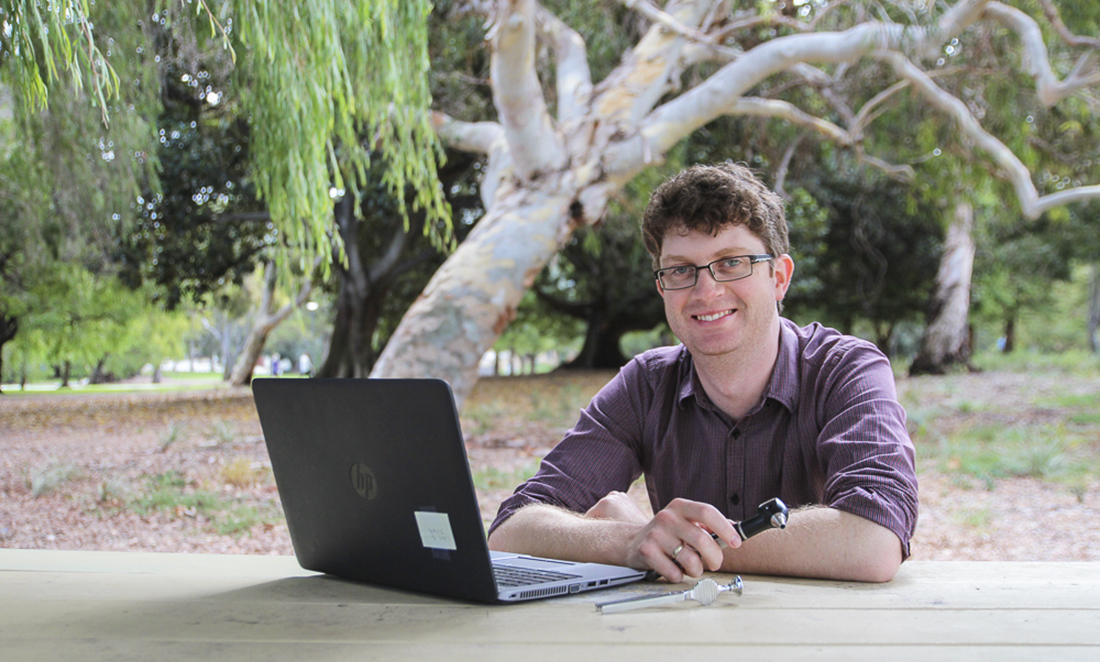Dr Chris Brennan-Jones is a paediatric audiologist at Perth Children’s Hospital, is based at Telethon Kids Institute and The University of WA, and is Head of Ear Health at the Wesfarmers Centre of Vaccines and Infectious Diseases.
And he’s committed to finding solutions for ear health – like changing the wait time for an assessment from two years to ten days.
Yes, you heard correctly. Ten days.
Each year 650,000 Australian children suffer from recurrent or chronic ear infections called otitis media (OM). OM can cause permanent hearing loss, but is entirely preventable when treated early.
But the average waiting time for assessments can be up to two years. That’s too long for children who are in crucial key stages of language, behavioural and educational development. Struggling to understand what is happening to them, many may face long-term social or mental health impacts.
For Chris, it comes down to two things: early identification; and access to care pathways.
The right diagnosis, at the right time
Back in 2016, Chris was named WA Premier’s Student Scientist of the Year for his PhD on the role of telehealth in improving access to hearing services.
Telehealth uses digital tech to deliver health services remotely. For Chris, this meant exploring and validating different technologies to capture images of ear drums or perform key diagnostic tests, and then accurately interpret the data.
The result was the Ear Portal teleheath system.

“Instead of losing all those gains that we got from early identification on waiting for a referral, we could use telehealth to get families straight into an appointment with a specialist – within 10 days.”
And for the right people
Chris says one of the struggles is that so many children get ear infections. It’s difficult to know who will bounce back, and who will go on to suffer from chronic ear disease.
One thing they do know is that Aboriginal children are disproportionately impacted by middle ear disease. OM affects one in four children in Australia – but one in every two Aboriginal children.
“From a public health perspective, OM is a big issue,” explains Chris. “Seeing the number of children, particularly Aboriginal children, suffering from the disease at such a young age really spurred me on to find a better pathway for them.”
Chris is working with an ear health partnership in metro Perth called Djaalinj Waakinj – ‘Listening, Talking’ in Noongar language.
He saw an opportunity to merge two issues together. Djaalinj Waakinj fuses telehealth technology with support from local Aboriginal health workers to facilitate remote diagnosis of OM.
The program is the first of its kind in Australia. Working in close consultation with the Aboriginal Community Advisory Group, this dedicated team offers essential surgery at no cost for Aboriginal children suffering severe ear infections.
“This is a really great partnership between scientists, health services and the community,” he says. “We’re finding better ways to work, and sharing knowledge so we can all work together towards improving hearing health.”

Seeing the big picture
It’s been a big four years between awards, but Chris is not stopping here. He wants to see the Djaalinj Waakinj program expand so that every kid can start school with good hearing.
“The first three years of your life are so critical, particularly when it comes to language development,” says Chris. “If you can’t hear, it’s really tough at school, and it’s really hard to learn.”
“What I find rewarding is when you can see the look on a kid’s face when they can hear again.”
“And you can see the relief in families when they know what the problem is, they know there’s a way to solve it. There’s a pathway for them and when you see the kids thriving, it’s a great thing to be a part of.”
And then he wants to look at improving the treatments.
“I love being able to develop these questions, find ways to answer them, and really have an impact in the place you live,” says Chris.









